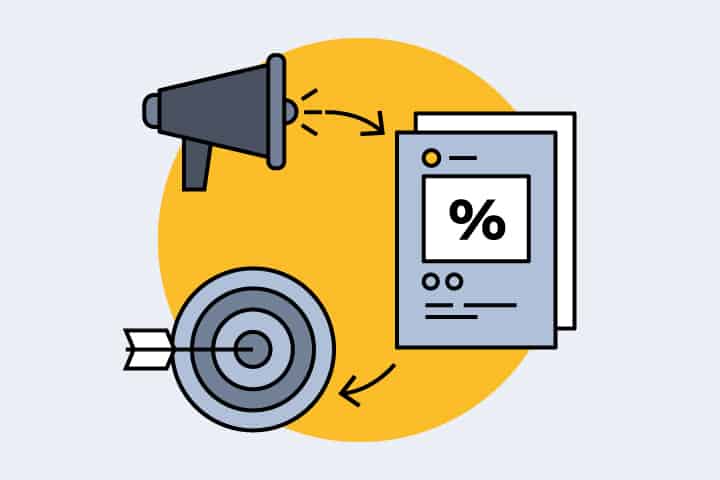Word of mouth is probably the most effective marketing strategy; also one of the most difficult to control. For instance, you can’t force someone to talk positively about your business, products, and services. But when you succeed in creating an excellent product or service that customers love, getting them to spread the word becomes easy.
About 92% of customers trust referrals more compared to traditional ads. Between your friend and a sponsored post on Facebook, which one do you trust more? No doubt, it is your friend, thereby making a referral program one of the fantastic marketing strategies you shouldn’t overlook.
Based on the tremendous benefits and results that the referral program promises, it has become one of the top ways marketers and business owners market their goods and services. If you’ve decided to give referral marketing a trial, this article will be your guide.
1. Set Your Goals
Every business can’t be the same, both in structure, industry, and overall goals. Before you go-ahead to start a referral program for your business, ask yourself what you aim to achieve. Most business owners are in for business growth, while others rely on revenue.
Sometimes, it could be that you want to build some amount of trust in your industry. Whatever be the case, you need to identify your goals to run an effective referral program. When you uncover your goals, try to define them explicitly.
If you want to go the extra mile, discover how referrals have been coming to your business, and see if you can tweak it for more growth. It will give you an idea of where you are and what you can improve when you do this.
2. Outline Possible Referral Channels
Setting up a referral program isn’t something you need to rush to avoid mistakes. At the early stage, determine likely referral sources and how you can drive them for more referrals. You can call these sources or channels advocate since it brings in prospects that might become lifetime paying customers.
Your referral sources could entail people you’ve connected in the past, or perhaps current customers, suppliers, unclosed leads, industry leaders, vendors, etc. Identifying these sources will help you to formulate marketing strategies that will yield results.
These sources or channels are a means to acquire more referrals, which will prove beneficial. Your sources will give you a firm ground to kick-start your referral program.
3. Identify Your Incentives
Incentives are like baits, which you use to compel a prospect to join or at least engage with your offers. There are two options when it comes to referral marketing: an incentive and non-incentive referral program.
However, a study by the University of Chicago discovered that a non-cash incentive performs 24% more than cash-incentives. While at this stage, determine what you need to offer, and who you should offer such a reward.
It will be appropriate if you don’t forget your referrer; they deserve to get something too. Airbnb is a perfect example, as they end up rewarding both the referrer and the referred. That way, both parties are motivated to bring more referrals to the program.
However, you want to make sure that your incentive doesn’t affect your business. Rewards could be discounts, coupon codes, or perhaps a cash reward. As long as you’re not breaking the bank to pay these incentives, then you’re good to go.
4. Promote Your Referral Program
When you’ve successfully created a referral program, you need to promote the heck out of it. You need to encourage, promote, and to keep promoting it for the best result. There are numerous ways to go about this. They include sending emails to your existing customers, professional or funny email signatures to capture attention, blog posts, landing pages, and even sponsored social media ads.
Without adequate promotion, you will lose some potential referrals that are most likely to make an incredible impact. Another terrific way to promote your referral program is by creating a button for it on your homepage.
Ensure the button is evident and attractive, so prospects can click and quickly join without hassles. At first, the leads from such promotion will be huge. But as time goes, this number will decline. Rest assured that it is normal. However, your aim should be to keep the result consistent and ongoing.
5. Well Designed Referral Program
The way you design your referral program will determine the kind of result you get. Once you have the basics down, imagine yourself in the shoes of your prospect. The look and feel of your program, does it communicate your business’s goals?
By keeping your referral message simple and easy to understand, you open the door for more opportunities. The way it looks, feels and sounds should be considered for the best result in your referral marketing endeavor.
Use a catchy headline, with an irresistible offer such as:
- Give $25, get $25
- Spread the word and get a free drum stick
- Refer a friend and get $30.
Aside from giving them an offer they can’t resist, also create your referral messaging to make it easy for your customers. That way, they can share with their friends without having to worry about what to type. A referral program with pre-filled messaging tends to bring better results.
When you make your referral program easy to refer people to, the sky becomes your starting point. Give your customers different ways to share, and they won’t disappoint.
Conclusion
A referral program could be the boost your business is looking for. Other forms of marketing can take time to start yielding results, but referral programs aren’t like that. Once it is launched and exposed to customers, you can expect results almost immediately.
If your products and services are of good quality, you won’t struggle to attract potential customers to join. Since referral marketing is cost-effective, it makes it one of the formidable marketing strategies you can use to skyrocket your business to an incredible height.

